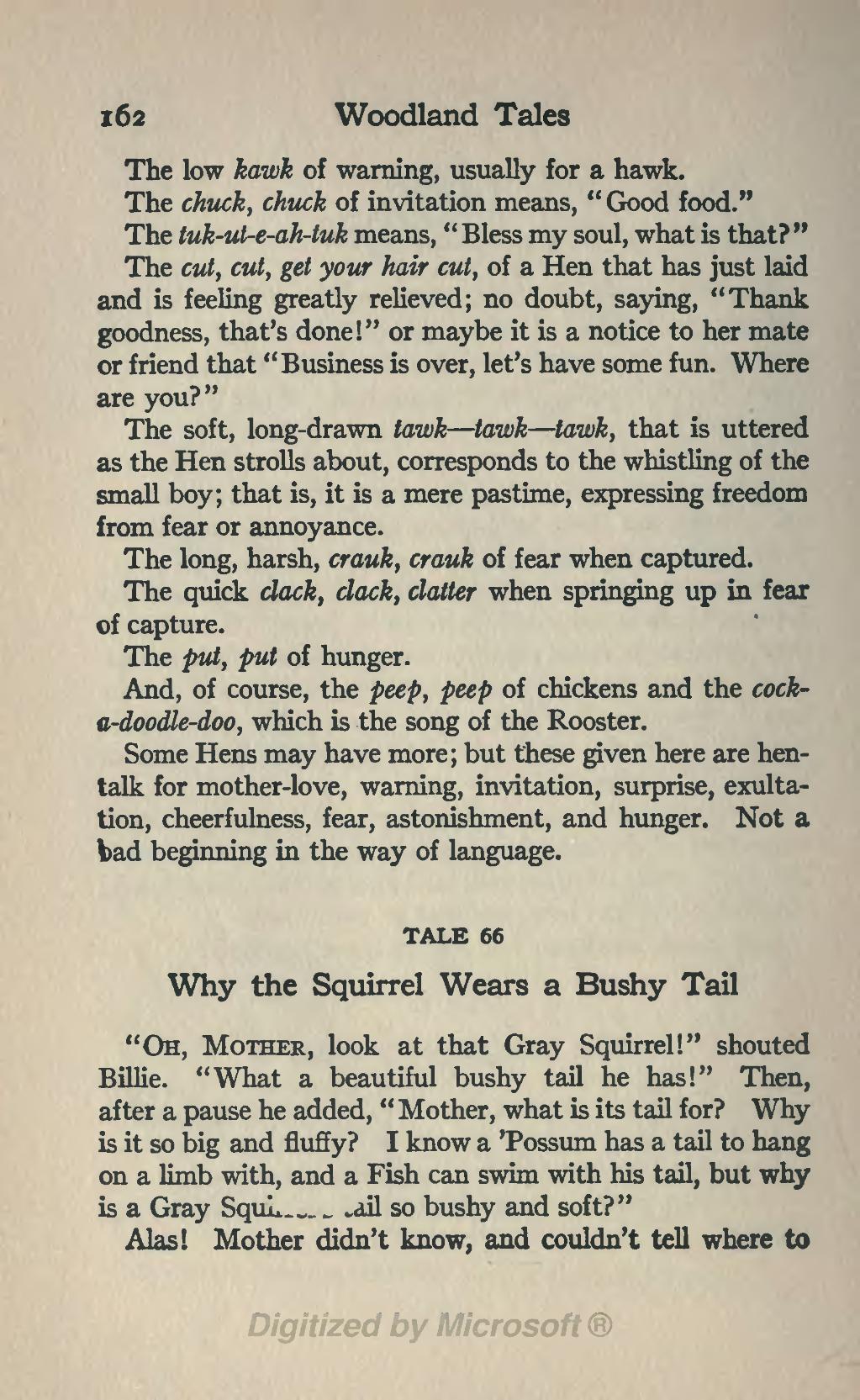Pokračování textu ze strany 183
The low kawk of warning, usually for a hawk.
The chuck, chuck of invitation means, “Good food”.
The tuk-ut-e-ah-tuk means, “Bless my soul, what is that?”
The cut, cut, get your hair cut, of a Hen that has just laid and is feeling greatly relieved; no doubt, saying, “Thank goodness, that’s done!” or maybe it is a notice to her mate or friend that “Business is over, let’s have some fun. Where are you?”
The soft, long-drawn tawk — tawk — tawk, that is uttered as the Hen strolls about, corresponds to the whistling of the small boy; that is, it is a mere pastime, expressing freedom from fear or annoyance.
The long, harsh, crauk, crauk of fear when captured.
The quick clack, clack, clatter when springing up in fear of capture.
The put, put of hunger.
And, of course, the peep, peep of chickens and the cock-a-doodle-doo, which is the song of the Rooster.
Some Hens may have more; but these given here are hen-talk for mother-love, warning, invitation, surprise, exultation, cheerfulness, fear, astonishment, and hunger. Not a bad begiiming in the way of language.
Why the Squirrel Wears a Bushy Tail
“Oh, Mother, look at that Gray Squirrel!” shouted Billie. “What a beautiful bushy tail he has!” Then, after a pause he added, “Mother, what is its tail for? Why is it so big and fluffy? I know a ’Possum has a tail to hang on a limb with, and a Fish can swim with his tail, but why is a Gray Squirell tail so bushy and soft?”
Alas! Mother didn’t know, and couldn’t tell where to ..text pokračuje
